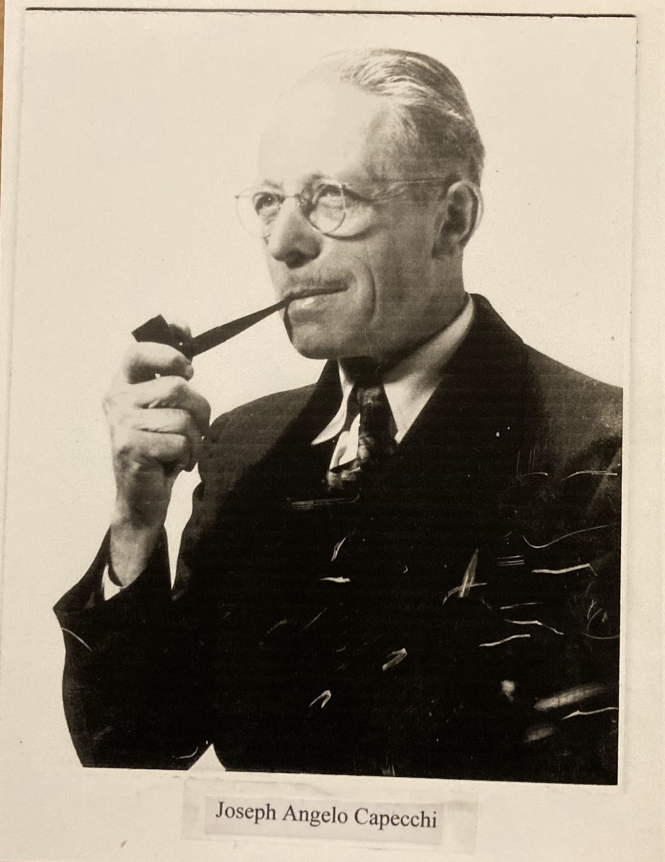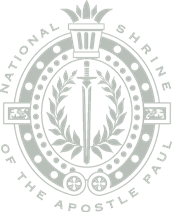A legacy in plaster, paint and bronze
Hello, Friends.
We had the good fortune to meet a grandson of the legendary Joseph Capecchi during our Cathedral Festival of Lights event in December. Jerry Capecchi and his wife, Becky, were volunteering at the indoor light show! What a treasure this family continues to be to the Cathedral.
Enjoy this story on the talented Joseph Capecchi written by Allison Simms, an intern in the Cathedral Archives Department and an Art History and Museum Studies graduate student at the University of St. Thomas.
Wishing you sunshine and May flowers,
Mary E. Schaffner, Cathedral Heritage Foundation, Board Chair
The Capecchi’s Story by Allison Simms
When 17-year-old Joseph Capecchi arrived in St. Paul in 1906, the Cathedral foundation had been laid and nothing more. Capecchi immigrated from Florence, Italy, to see a new county and work as a sculptor. The Giuliani Statuary Company hired young Joseph to do the decorative work. By his retirement, Capecchi was president of the company, which had been renamed St. Paul Statuary.
Capecchi is one of the 1,421 Italian immigrants who arrived in Saint Paul in the first decade of the 1900s. Leading up to the Cathedral’s construction, the Catholic population in the city of Saint Paul grew rapidly with the arrival of German, Irish, French Canadian, Slavic, and Italian immigrants, amongst many others, necessitating the larger church building. Each of these immigrants left a legacy. Capecchi’s contribution, and that of his local descendants, can be seen and touched on the very walls of the Cathedral.
(More on the story continues following the photos below.)

1954 marked the year Capecchi determined the color scheme of red, blue, and especially bright yellow to inspire visions of heaven for the interior dome and the mosaics of the four cardinal virtues.

In 1954, this color study for the mosaic of the virtue fortitude followed the color scheme suggested by Capecchi. The four virtue mosaics can be found on the pendentives below the dome.

1958 Capecchi designed the plaster model for the Infant of Prague statue in Saint Joseph’s Chapel.
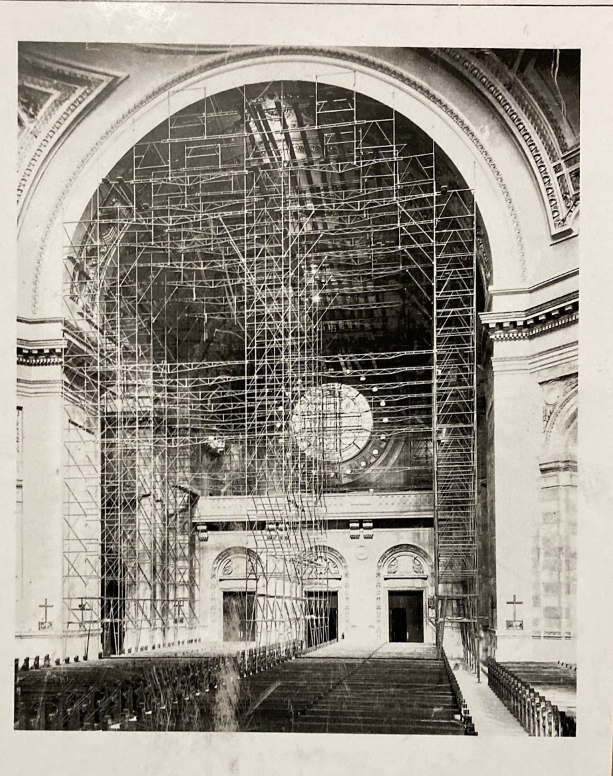
In the 1970s, the Capecchi’s returned to the Cathedral to repair smoke damage from an attempted arson.

1956, Capecchi designed the bronze plaques honoring Bishop John Murray, and another one to commemorate the 1936 visit from Cardinal Pacelli (Pope Pius XII). both can be found near the north entrance to the Shrines of Nations.
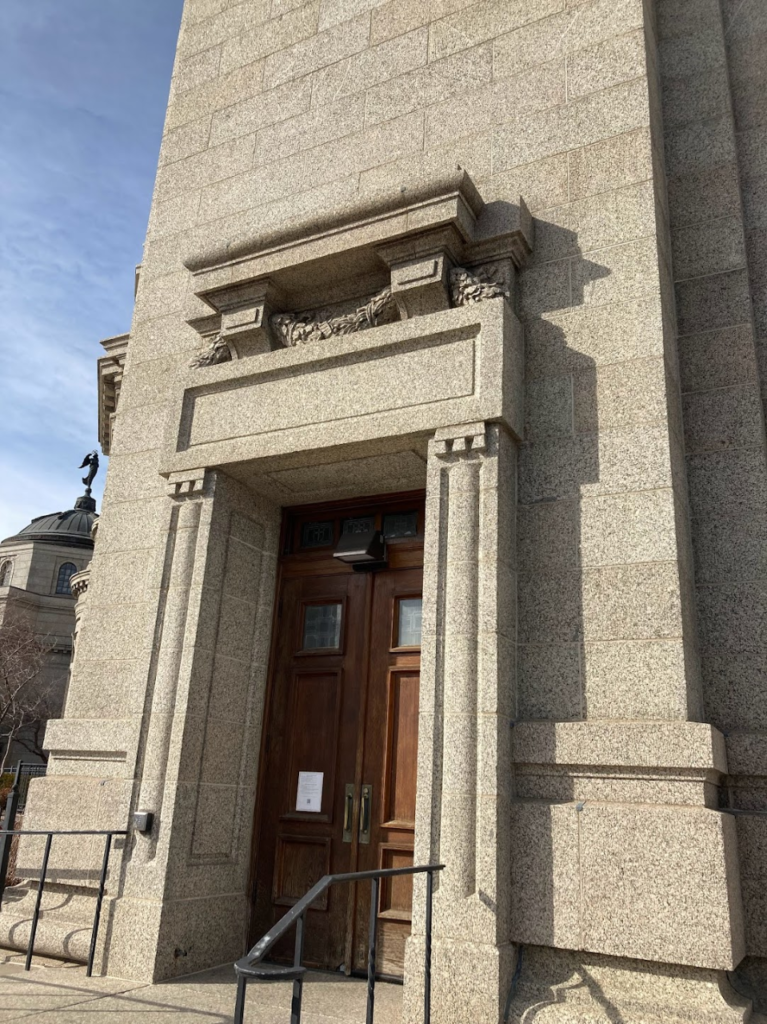
In 1951, Capecchi sculpted the Selby and Dayton Avenue entrances to feature tall columns and hanging botanical carvings above the doors.
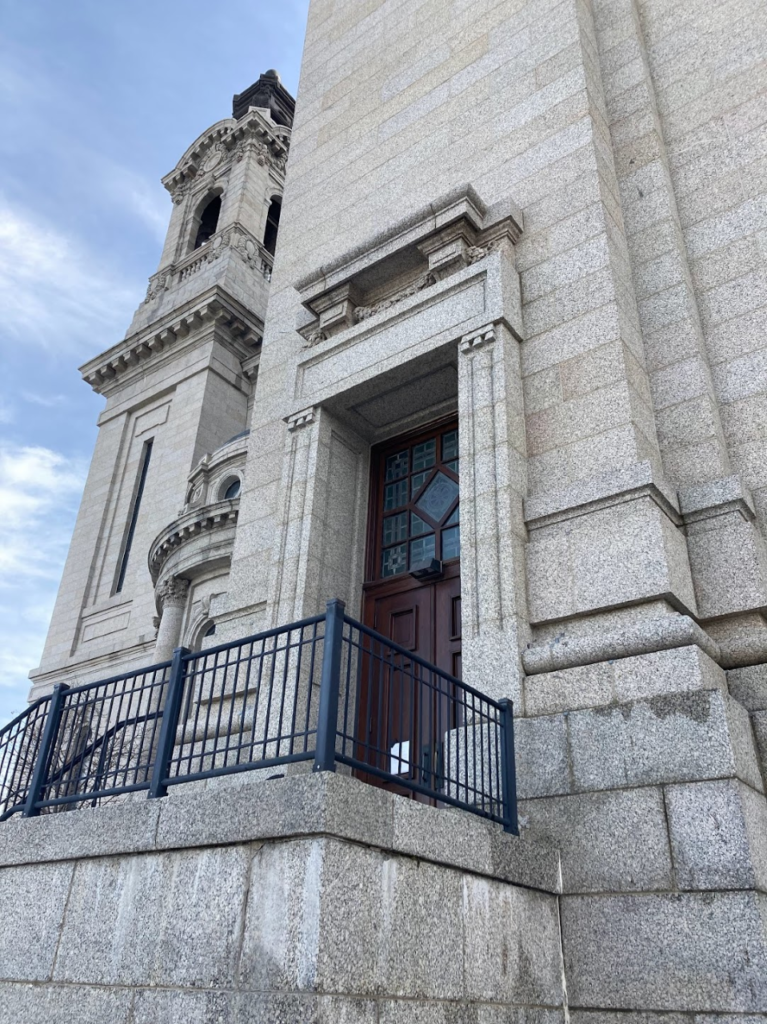
The Dayton Avenue entrance.

In 1956, Capecchi designed and sculpted in clay the 14 Stations of the Cross, and then cast these in bronze with oak features. The 14 stations are located around the perimeter of the main seating area of the Cathedral.
A Family Tradition
Caring for the Cathedral has become a multi-generational Capecchi family tradition. After smoke damage from attempted arson in the 1970s, Joseph’s sons Joe Jr. and Paul L. and his grandsons Paul A., Jerry, and Mark refurbished the Cathedral.
Paul L. and his son, Mark, returned to repair water damage in the Cathedral in the 1980s.
These refurbishment projects marked three generations of the Capecchi family who worked on the Cathedral. Joseph Capecchi indeed left his legacy in plaster, paint, bronze, and generations of his family of Cathedral guardians.

